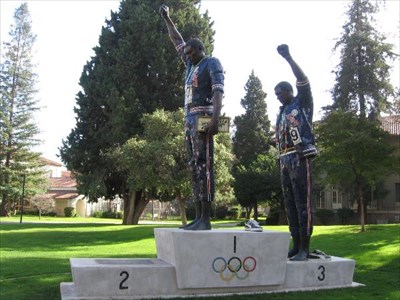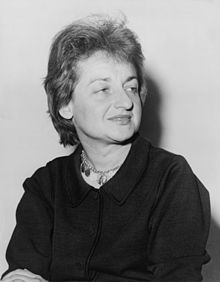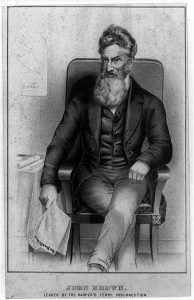1968 was a year of racial division and tragedy. African American’s had discussed the possibility of a boycott of the 1968 Summer Olympics. Dr. Martin Luther King Jr., a huge supporter of this boycott, said he would join Olympians John Carlos and Tommie Smith in Mexico to protest.1 These boycotts slowly fell through the cracks following the assassination of Martin Luther King Jr., and the riots during the Holy Week uprising. These riots were a direct response to the tragic death of MLK. Now that Dr. King would no longer be joining John Carlos in Mexico, other athletes became skeptical in boycotting the Summer Olympics. African American athletes began to change their stance on the boycott. The Olympians decided they would rather compete for themselves and their country, rather than sit out for a protest that would have a lot of attention in the media. But, John Carlos still felt like something needed to be done about the racially divided nation he lived in. With just a few weeks until the 1968 Summer Olympic Games, John Carlos had to decide how he would make his stand without the help or support of other Olympians or the civil rights activist Martin Luther King.2

With just ten days until the opening of the Summer Games, an unarmed group of student protesters gathered in Mexico City’s Three Cultures Square to plan their next step as a movement. The Mexican government sent bulldozers to break up the thousands of people who had gathered there. Mexican troops fired into the crowd, injuring and taking the lives of many people.3
This tragedy was eye-opening for both Carlos and Smith. Being in Mexico helped them to realize that they lived in a world that was unjust for all kinds of people. So the two decided that they needed to make a stand, and to be a voice for the voiceless.4 John Carlos and Tommie Smith knew that if they wanted to make a stand, it was imperative that they compete well enough to end up on the podium for the world to see.
Prior to their races, John Carlos and Tommie Smith decided that they both needed to make the podium together to make their stand through symbolism. The two men decided they would wear black gloves to symbolize strength and unity. They also wore beads around their necks to represent the history of lynching, and they decided to not wear shoes to symbolize black poverty in America.5 John Carlos and Tommie Smith wanted to do this because they felt that something needed to call attention to the broken and discriminated nature of their country. They wanted to make sure people were aware that there were those who lived in the “land of the free” that were far from free in terms of oppression.
The qualifying rounds had finally begun, and Tommie, unfortunately, pulled his groin in the quarter semi-finals. He refused to sit out though. Tommie was determined to compete because, to him, the race was so much bigger than he was, and bigger than anything else happening at the Olympics that summer.6
200m Final | Courtesy of Youtube
The finals had finally arrived. The next twenty seconds would be a defining moment for the two men. The gun sounded and the two flew. Tommie had a slow start but ended up setting a world record with a time of 19.57. John Carlos finished third, bested by Peter Norman by one step. But the two had made the podium, and it was time for them to make their stand. John Carlos told Norman what was about to happen, and Norman placed a button on him that read “We are Olympic Project for Human Rights,” to support the two men he was about to stand with on the podium.7

Carlos and Smith finally got their time on the podium, and as the two men’s fists shot up, 50,000 people fell silent. When the two walked toward the tunnel, following the National Anthem, people began booing and throwing things at them, screaming at them things like “Niggers need to go back to Africa,” and “I can’t believe this is how you Niggers treat us after we let you run in our games.”8 Then, in the midst of all this, the two stopped, threw their fists up again, screamed “right on,” and ran off the track.
The two got on the bus to begin the ride back to Olympic Village, and they got a glimpse of the rude awakening they were about to receive upon returning to the United States. As the two were about to sit down in the bus, a white man shouted: “those are the two that spit on my flag, you must be some kind of Communist.”9 The man continued badgering them until they arrived at Olympic Village.10
As the Olympics progressed, the USA Track team supported Carlos and Smith, and made signs to display throughout the remaining events. Following the United States winning the 4×100 relay finals, the team dedicated their win in an interview to Carlos and Smith. The US Olympic Committee was furious with the negative press that John Carlos and Tommie Smith were receiving for the scene they had caused, and the US Olympic Committee told the US team to either fly home or kick the two men off the team.11
Carlos and his wife were being bothered by the press constantly, and as they were heading to their hotel room one night, Carlos snapped and told the press: “Listen, I’m pretty pissed off with some of you white folk out there. The next one that takes a camera and microphone and sticks it up in my face, I am going to knock you down and act like you stole something.”12 These comments only escalated a situation that was already being blown up in the United States.13
After John Carlos and Tommie Smith returned home, they were suspended from the United States track team for making a scene on international television. And they began receiving death threats from many people.14 They were also being slammed in the media. Reporters called them “Blacked Skinned Storm Troopers,” while comparing their peaceful protest to a “Nazi Salute.”15 So much of the nation was infuriated with what these men had done. Some African Americans had even told them that they “set back black people 100 years.”16 The two refused to let the backlash quiet their message though, and they began speaking at colleges and in cities around the country to discuss equality in America. These men stood for something they believed in and got slandered in the media all over the world.17

Carlos and Smith felt like something needed to be done about the way people treated African Americans in America, and they refused to stand by and be complacent with the slow progress the United States had been making. It was not until 2008 that they received an ESPY award and were recognized in the media for their brave action.18 It’s truly tragic to see how these men were treated following the 1968 Summer Olympics, but it’s inspiring to see people fight and stand for what they believed in to call attention to issues they felt weren’t being adequately addressed in the United States. These men are part of the reason why we have made such great strides in the struggle for equality in America today.
- Erin Blakemore, “How the Black Power Protest at the 1968 Olympics Killed Careers,” History.com, February 22, 2018. Accessed February 14, 2019. https://www.history.com/news/1968-mexico-city-olympics-black-power-protest-backlash. ↵
- John Carlos, The John Carlos Story: The Sports Moment That Changed the World (Chicago, Illinois: Haymarket Books, 2011), 90-97. ↵
- Erin Blakemore, “How the Black Power Protest at the 1968 Olympics Killed Careers,” History.com, February 22, 2018. Accessed February 14, 2019. https://www.history.com/news/1968-mexico-city-olympics-black-power-protest-backlash. ↵
- Erin Blakemore, “How the Black Power Protest at the 1968 Olympics Killed Careers,” History.com, February 22, 2018. Accessed February 14, 2019. https://www.history.com/news/1968-mexico-city-olympics-black-power-protest-backlash. ↵
- John Carlos, The John Carlos Story: The Sports Moment That Changed the World (Chicago, Illinois: Haymarket Books, 2011), 110. ↵
- John Carlos, The John Carlos Story: The Sports Moment That Changed the World (Chicago, Illinois: Haymarket Books, 2011), 111-112. ↵
- John Carlos, The John Carlos Story: The Sports Moment That Changed the World (Chicago, Illinois: Haymarket Books, 2011), 112-113. ↵
- John Carlos, The John Carlos Story: The Sports Moment That Changed the World (Chicago, Illinois: Haymarket Books, 2011), 121. ↵
- John Carlos, The John Carlos Story: The Sports Moment That Changed the World (Chicago, Illinois: Haymarket Books, 2011), 123. ↵
- John Carlos, The John Carlos Story: The Sports Moment That Changed the World (Chicago, Illinois: Haymarket Books, 2011), 123. ↵
- Erin Blakemore, “How the Black Power Protest at the 1968 Olympics Killed Careers,” History.com, February 22, 2018. Accessed February 14, 2019. https://www.history.com/news/1968-mexico-city-olympics-black-power-protest-backlash. ↵
- John Carlos, The John Carlos Story: The Sports Moment That Changed the World (Chicago, Illinois: Haymarket Books, 2011), 124. ↵
- John Carlos, The John Carlos Story: The Sports Moment That Changed the World (Chicago, Illinois: Haymarket Books, 2011), 127. ↵
- John Carlos, The John Carlos Story: The Sports Moment That Changed the World (Chicago, Illinois: Haymarket Books, 2011), 130. ↵
- DeNeen L. Brown, “They didn’t #TakeTheKnee: The Black Power protest salute that shook the world in 1968,” The Washington Post, September 24, 2017. Accessed February 14, 2019. https://www.washingtonpost.com/news/retropolis/wp/2017/09/24/they-didnt-takeaknee-the-black-power-protest-salute-that-shook-the-world-in-1968/?utm_term=.97f6d2d0f51a. ↵
- “Sprinters are Both Suspended Because of Protest,” The Parsons Sun, Kansas, October 18, 1968. ↵
- DeNeen L. Brown, “They didn’t #TakeTheKnee: The Black Power protest salute that shook the world in 1968,” The Washington Post, September 24, 2017. Accessed February 14, 2019. https://www.washingtonpost.com/news/retropolis/wp/2017/09/24/they-didnt-takeaknee-the-black-power-protest-salute-that-shook-the-world-in-1968/?utm_term=.97f6d2d0f51a. ↵
- DeNeen L. Brown, “They didn’t #TakeTheKnee: The Black Power protest salute that shook the world in 1968,” The Washington Post, September 24, 2017. Accessed February 14, 2019. https://www.washingtonpost.com/news/retropolis/wp/2017/09/24/they-didnt-takeaknee-the-black-power-protest-salute-that-shook-the-world-in-1968/?utm_term=.97f6d2d0f51a. ↵



57 comments
Malleigh Ebel
I did not realize how eventful the 1968 Olympics was. The drastic change in plan between Martin Luther King Jr.’s plan to boycott (which did happen, although he was assassinated and the Mexican government massacred them) and Carlos and Smith’s valuable contribution by competing and making it to the podium, even after Smith pulled his groin in the qualifying round. Their accomplishment and symbolic attire made their beliefs seen and let their voices be heard for African Americans throughout the nation. This still came with some backlash, as the movement was still not completely successful, and it’s our job to continue that mentality of equality for all races to this day.
Eloy Cruz
Both of these men obviously had a crucial role in the development of equal rights for African-Americans. The 1968 Summer Olympics in Mexico City was an important and memorable event for all African-Americans during the late-mid 20th century. When I see this I also remember about the criticism that all the NFL player that kneeled during the national anthem at games received for expressing how they felt they were being treated, and this is more recent. People that aren’t always treated fairly are also a lot of the times. This article was very informative and excellent, Thomas.
Sydney Hardeman
This was a well done article. This is a great story to write about. I knew about Tommie Smith and John Carlos and the stand that they took, but I didn’t know about the context as far as how it related to the protests that were being planned with Martin Luther King Jr. and its relation to his assassination. Very informative. I definitely related this story to Colin Kaepernick’s protest against police brutality, as he began to kneel at NFL games. Both were to protest the oppression of black Americans, and both were on large platforms and acts of bravery.
Addie Piatz
Over the years of learning history they are are plenty of examples of men and women standing for what the believe in and being brave. I had known about this particular story before but never really read anything on the details. Now that I have had the pleasure of reading more about this story, I’m glad that these two men had the heart and the bravery to do what the did knowing that it was going to be controversial. I think that the reaction that they received unfortunately was expected but completely unnecessary. I am however glad that people of all races were able to turn their opinions around and award Mr.Carlos and Mr. Smith with the ESPY Award. I loved the way the article was written it was very enjoyable.
Mauro Bustamante
Both Olympians showed so much strength by using their platform to shed light upon the segregation in the country that they represented during the 1968 Summer Olympics. When reading this article, it shocks me that John Carlos and Tommie Smith didn’t receive a ESPY award until 2008, when the ESPY awards were created in 1993. In my opinion, the two Olympians should have been one of the first to be awarded. The amount of disrespect and hate these two American Athletes received, just only for utilizing their right to the First Amendment is shocking to read. On that note, this article shared the hard truth of what happened, and is a great read.
Maria Martinez
Both John Carlos and Tommie Smith showed an incredible amount of courage and bravery when deciding to make the symbolic salute at the Olympics, a true inspiration. There was so much chaos after the death of Dr. Martin Luther King Jr., and for these two men to do something so controversial and powerful it really provided a beacon of hope for so many. It is truly disappointing that the problems that they were silently protesting against are still very real today, and peaceful protesters are still being criticized and harassed today.
Victoria Salazar
I loved the article! Any sort of inspiring sports story always leaves me wanting to learn more about the event. I had already heard Carlos and Smith doing the black power salute in the 1968 Summer Olympics, but I learned learning more about it. It’s sad to think how we are so far away from that time but haven’t made much change. The hate they received is similar to NFL players losing contracts and being black-balled for kneeling during the national anthem. Once again, great article.
Mariah Garcia
The Olympics is broadcasted around the world and for John Carlos and Tommie Smith to do a peaceful protest is an outstanding moment in history. This was to stand up against racial segregation in the United State’s. I think this was an amazing way to do it and we see it today in the NFL with the brutality of police forces. Overall, this was an interesting article about the power salute that will go down in history.
Sharriah Martinez
This was a great article Thomas! congrats on your nomination ! I had never heard about any of this so it was refreshing to read something new! These men took a stand for racial equality and they were not supported by alot of people and did not care! I am proud of the changed we have made as a country but we still have alot more work to be done.
Hamza Bourouz
Great article. I enjoyed reading about the courage of these two men, the assassination of Martin Luther King Jr. did not stop them from peacefully protesting the horrible conditions African Americans had to endure at the time. it is astonishing how a peacefull protest has a more powerful impact than a violent one. their story is similar to colin kapearnick’s story as both chose peacefull portest and caused huge outrage towards a just cause.